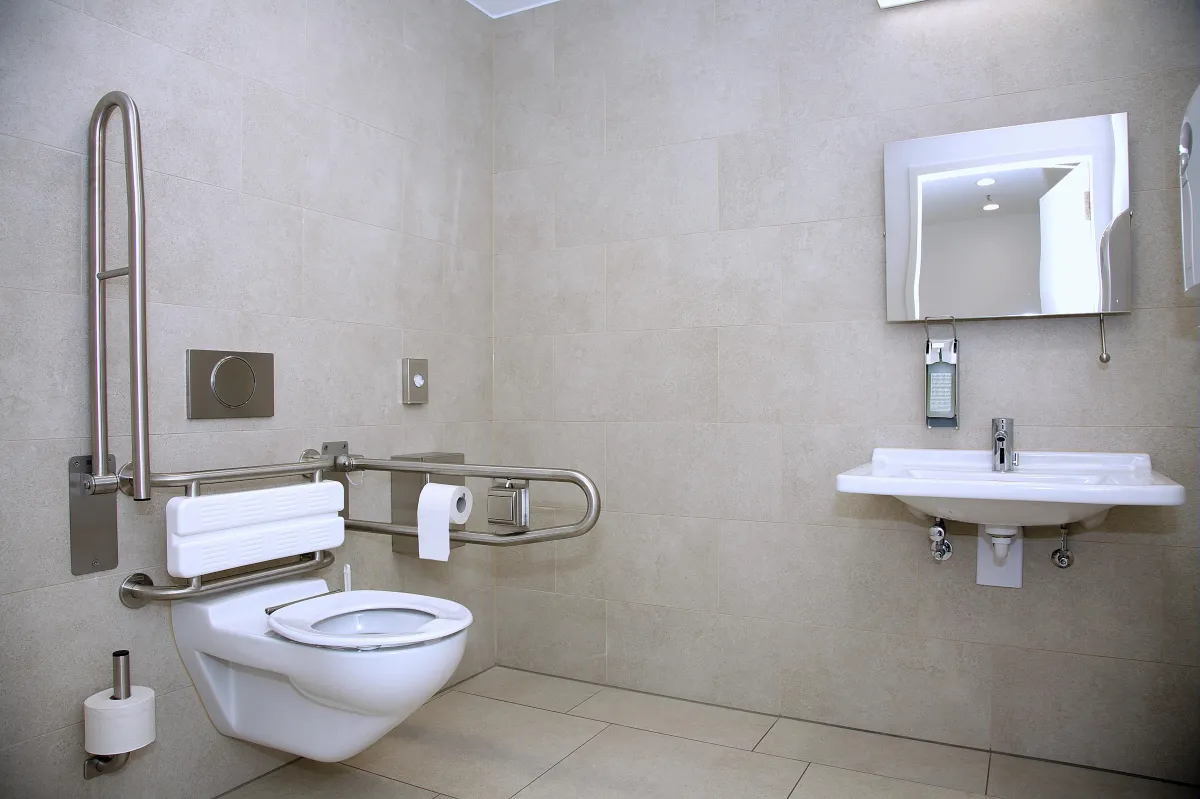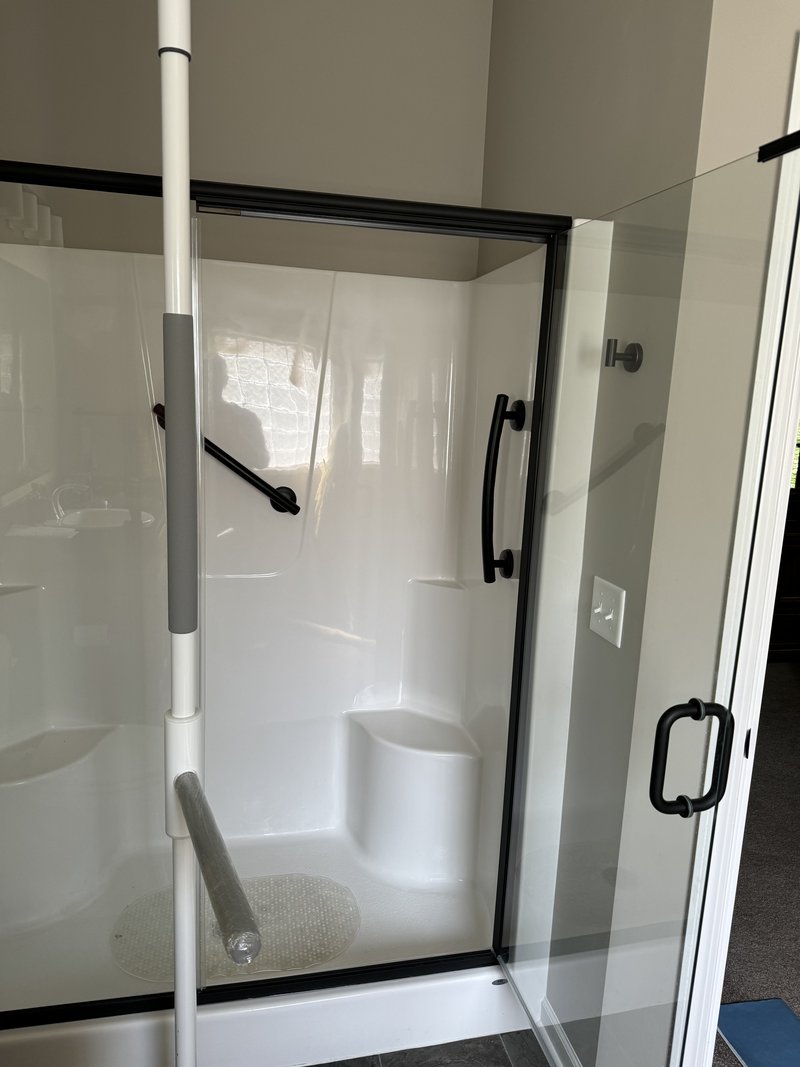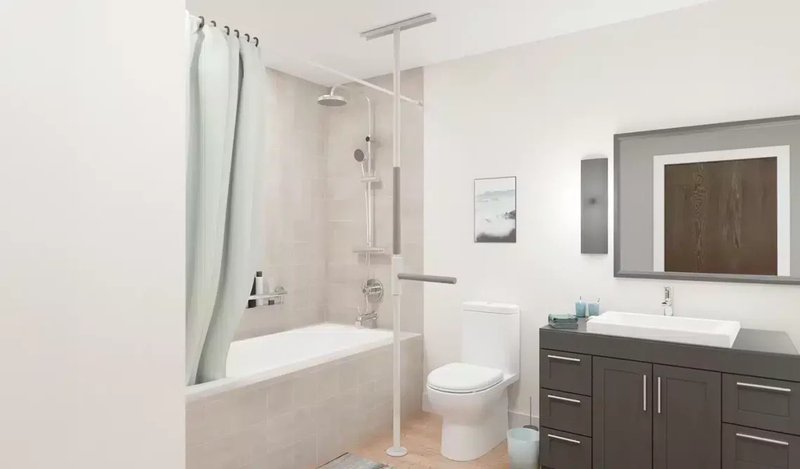
Accessible Bathroom Solutions for Independence
Ensuring an accessible bathroom fosters independence, safety, and dignity for seniors and their families. A well-designed space minimizes fall risks, simplifies daily routines, and gives peace of mind to users and caregivers. Choosing appropriate equipment tailored to individual needs enhances comfort and promotes a sense of autonomy. This insight examines key solutions that transform bathrooms into supportive and user-friendly environments.
Equipment selection should take into account physical capabilities, home layout, and personal preferences. Durable medical equipment designed for bathroom use encompasses a range of products, including grab bars, seating, and advanced mobility systems. Thoughtful integration ensures optimal usability without compromising aesthetics. Families gain valuable knowledge to guide decisions toward creating safe and accessible bathroom setups.
1. Grab Bars and Support Rails
Strategically installed grab bars offer reliable support during transfers and moving around an accessible bathroom. Placing these rails near showers, tubs, and commodes reduces the risk of slipping and improves balance and stability. Ensuring proper length, diameter, and anchoring position enhances user confidence. Materials with textured or ergonomic grips help prevent hands from slipping, even when wet.
Height adjustment and positioning are crucial for accommodating varying mobility levels. Horizontal bars next to the toilet help users during transitions between standing and sitting. Vertical or diagonal rails near shower entries support upright movement with reduced effort. Rails mounted with strong anchors into studs ensure stability and durability over time.

Some grab bars now feature integrated lighting or humidity sensors for added functionality. Illumination enhances visibility during nighttime visits without the need for harsh overhead lighting. Sensors can detect excess moisture, prompting airflow systems or caregiver alerts. Multi-functional rails offer both physical support and environmental awareness in a single, integrated solution.
Regular inspection and maintenance of support rails ensure continued safety and performance. Over time, moisture or improper installation can cause the rails to loosen, reducing their reliability. Tightening bolts or replacing damaged components maintains user protection. Ensuring proper functionality over time supports long-term independence and confidence.
2. Accessible Shower and Bathroom Tub Seating
Shower chairs and benches reduce the physical strain associated with standing for extended periods. Simple portable seats offer stability, while more advanced swivel benches assist users in rotating safely into the bath. Non-slip surfaces and adjustable leg height provide stability on wet tiles. These features minimize slipping and improve user confidence in bathing activities.
Walk-in tub benches offer added accessibility for those who prefer more permanent installations. They lower the entry threshold and provide a seat for complete submersion without climbing. Padded seats and armrests enhance comfort while bathing. Installation with proper water diversion ensures the floor remains slip-resistant.
Transfer benches combining seat rotation and sliding functions further reduce effort during entry and exit. Users can sit outside the shower or tub, slide inward, and stand up within a safe environment. Swivel seats lock securely during transfers to prevent rolling off. Multi-functional seating options cater to a diverse range of mobility needs.
Maintenance of shower seating should focus on cleanliness, sturdiness, and corrosion prevention. Removable seats and smooth surfaces facilitate easy cleaning, reducing the buildup of mold and bacteria. Nonmetallic materials resist water damage and prolong product lifespan. Well-maintained seating supports consistent hygiene routines and safety.
3. Hands-Free Accessible Bathroom Controls and Temperature Safety
Hands-free sink and shower controls enhance bathroom safety for individuals with limited dexterity. Lever faucets or touchless sensors reduce strain and improve accessibility. Easy-to-reach controls mounted on adjustable bars help caregivers assist without compromising balance. Responsibly designed controls promote safer daily hygiene routines.
Temperature-regulated systems prevent scalding by monitoring water temperature. Anti-scald devices automatically adjust flow at predefined thresholds, ensuring consistent warmth. Clear markings allow users to set desired temperatures without guesswork. Safe water control enhances comfort and protects users from burns.
Remote-controlled shower valves now allow users to start and adjust water flow remotely. Pre-programmed settings remove the need for manual adjustments during bathing. Automatic shut-off features prevent waste and reduce the risk of flooding. Simple interfaces enable independent shower management for those with limited hand strength.
Routine inspection of automatic and remote systems maintains operational safety. Battery replacement and sensor calibration ensure reliable performance. Periodic water testing checks for inconsistent flows or pressure drops. Functional controls prevent surprises and continue to ensure safe and pleasant hygiene experiences.
4. Elevated and Accessible Toilet Solutions
Raised toilets and pedestal seats reduce strain during both sitting and standing, thereby minimizing the risk of falls. Height-adjustable options accommodate different user needs and physical abilities. Combining a raised seat with armrests promotes safer transfers for those with limited mobility. These solutions improve bathroom independence without requiring full remodels.
Powered toilet lifts gently elevate and lower users, eliminating the need for manual assistance. Quiet motors and slow movement settings reduce discomfort and promote dignity. Safety sensors detect improper positioning and halt operation to prevent accidents. Such equipment offers peace of mind for both users and caregivers.

Bidet attachments with accessible controls support hygiene without excessive bending or twisting. Remote-controlled or lever-operated models allow users to manage cleaning independently. Heated seats and adjustable spray position accommodate comfort and convenience. Integrating personal hygiene tools enhances autonomy and dignity.
Keeping seat mechanisms and remote systems in clean, working order ensures reliable performance. Waterproof covers, secure wiring, and regularly checked batteries maintain safety and function. Routine sanitization prevents odors and germ buildup. Investing in well-maintained equipment supports daily comfort and long-term use.
5. Floor Modification and Supportive Flooring
Slip-resistant flooring makes a major difference in accident prevention, especially in moist bathroom environments. High-traction tiles or vinyl surfaces offer a better grip, thereby reducing the risk of falls. Mats with suction bottoms offer additional traction without posing trip hazards. Flooring changes are often subtle yet significantly impactful for safety.
Gentle floor transitions reduce the risk for wheelchair or walker users during transfers. Level entries or minimal thresholds allow for smooth movement across spaces. Properly leveled flooring eliminates intermediate steps that can lead to tripping incidents. Smart flooring modifications support the use of mobility devices.
Floor heating systems programmable with temperature controls add comfort and reduce cold-related hazards during winter. Warmer floors lessen the likelihood of sudden temperature-related joint stiffness. Consistent warmth supports safer footing and improves the bathing experience. Practical heating upgrades elevate both comfort and usability for elderly individuals.
Periodic cleaning and resealing of flooring ensures long-term grip and cleanliness. Slippery soap residue and mold buildup can negate traction over time. Regular maintenance keeps surfaces safe, hygienic, and visually appealing. A well-kept bathroom floor promotes daily independence and confidence.
Get Accessible Bathroom Solutions for Your Home
Accessible bathroom solutions create safer and more independent living environments for seniors and their caregivers, enabling them to maintain their independence and dignity. Integrating supportive equipment and thoughtful design minimizes fall risks, simplifies daily routines, and enhances dignity. Consistent inspection and upkeep of these tools ensure long-term reliability and comfort. Caregivers can rely on practical solutions that support independence, safety, and well-being.
Products featured here are available for exploration and customization with assistance from James Medical. Free in-home evaluations ensure the right equipment selection and professional installation. Ongoing maintenance, repair services, and loaner equipment provide continuous support when needed. Learn more and support independence in your loved one’s daily routines.

